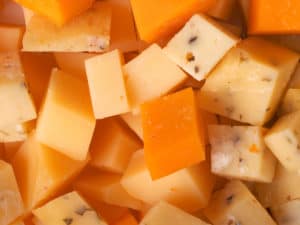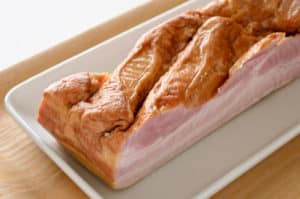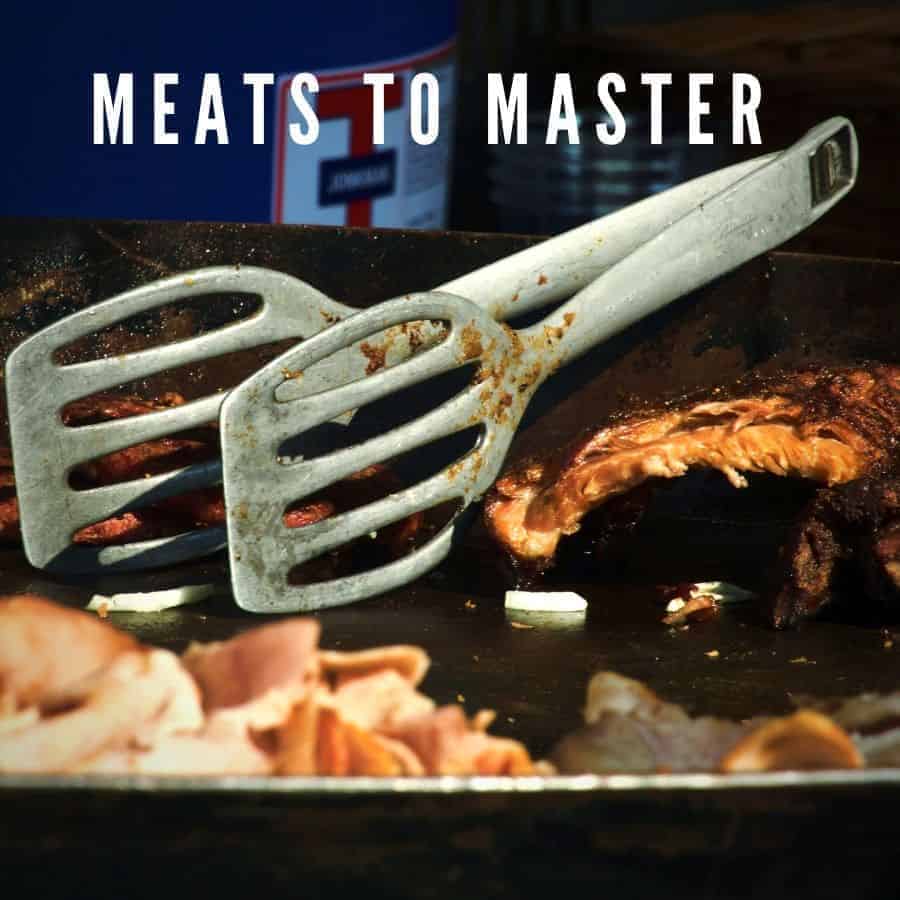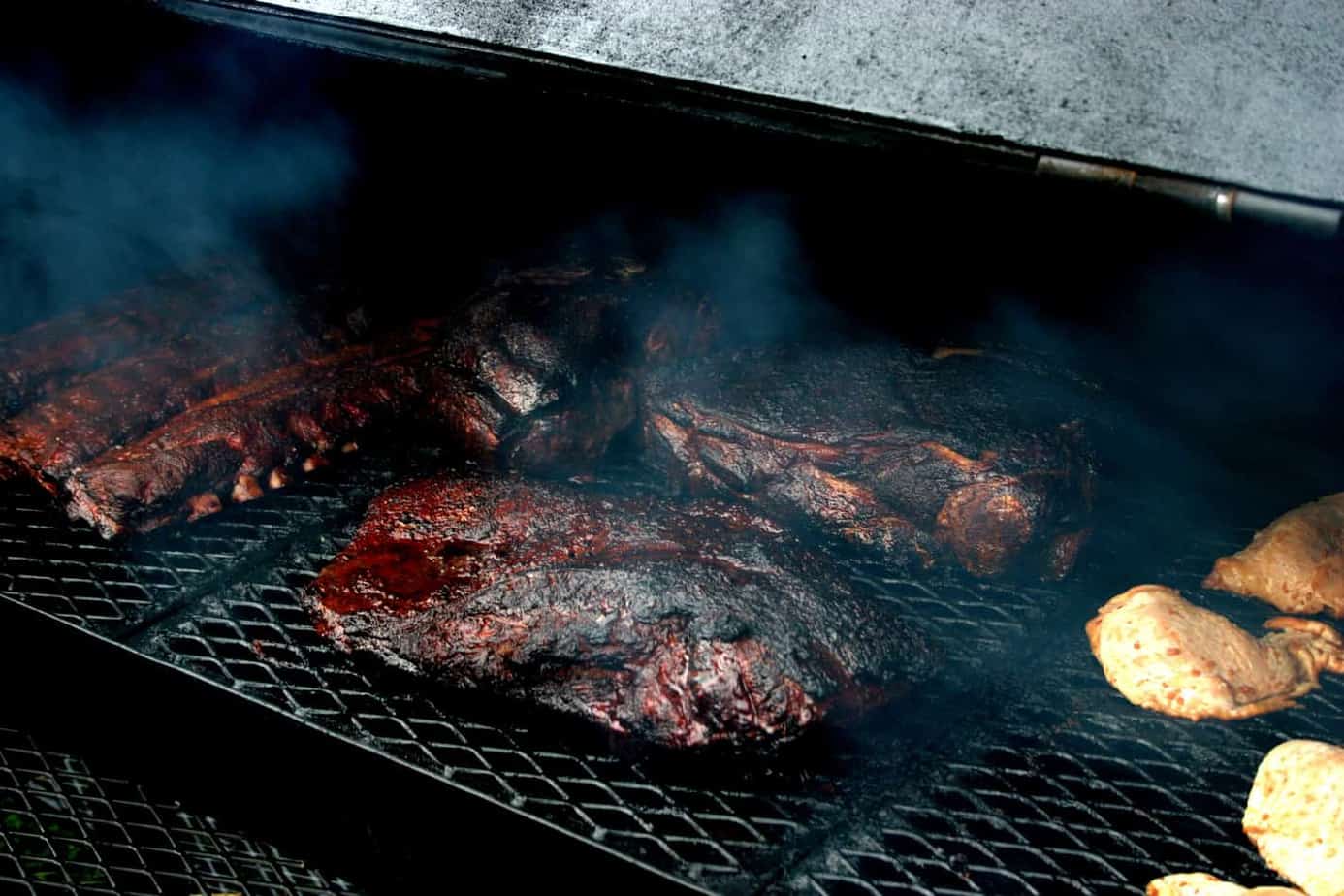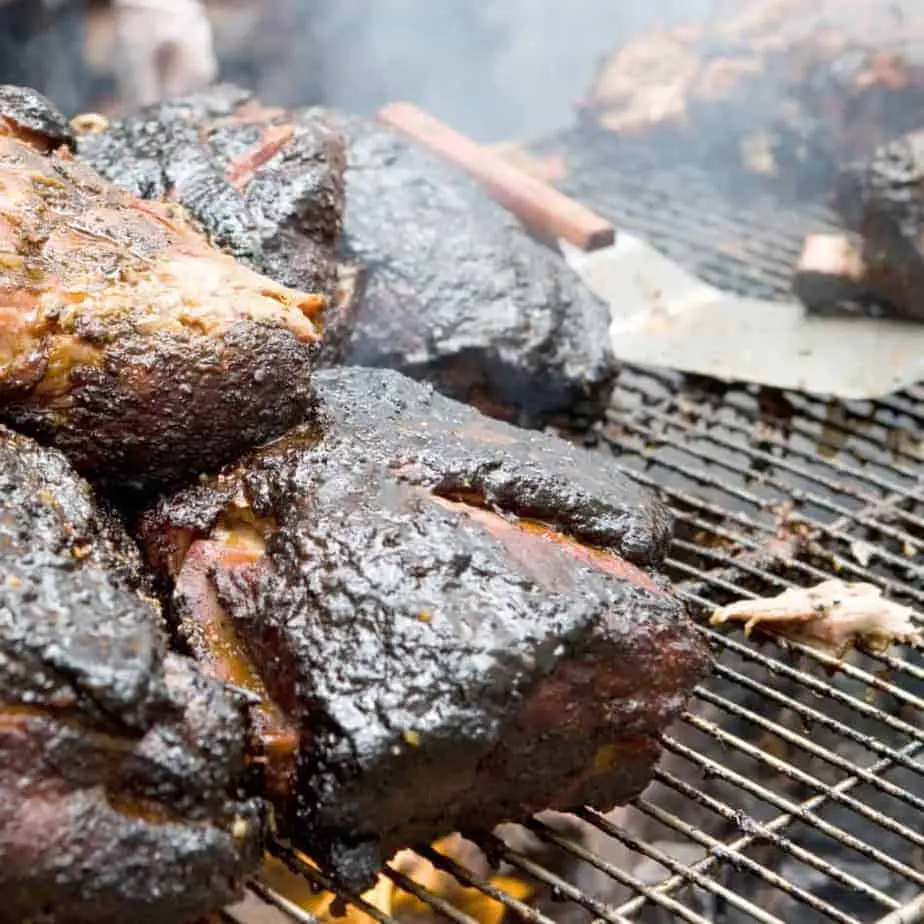Baby Back vs Spare Ribs: What You Need to Know about Pork Ribs
Disclosure: This post may contain affiliate links. If you use these links to buy something we may earn a commission at not additional cost to you. Learn more.
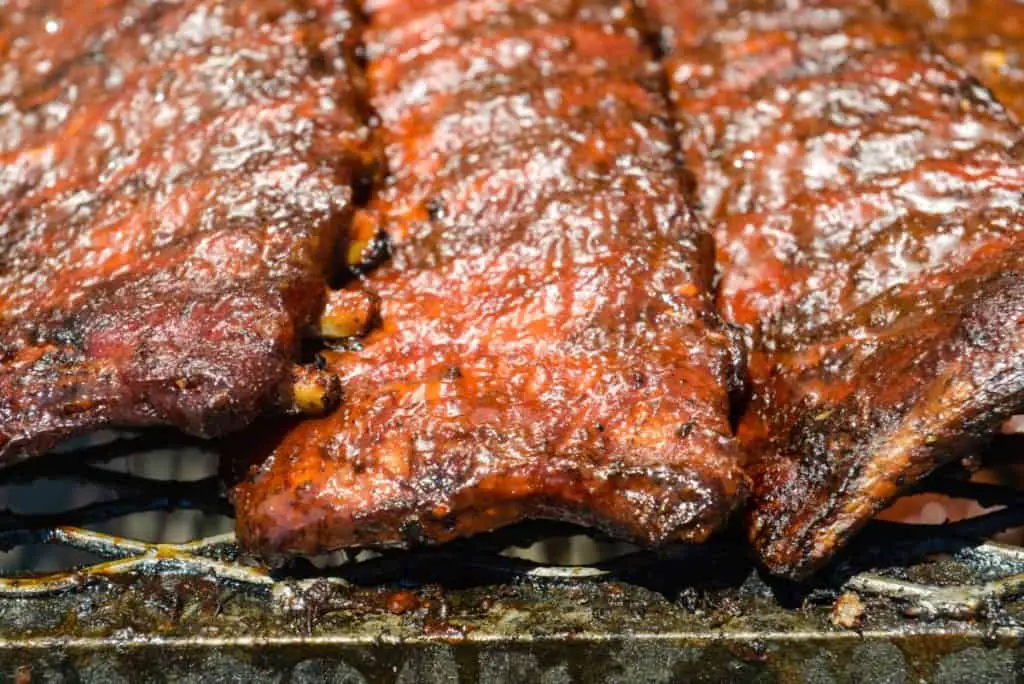
Ribs are a staple of the barbeque world and they come in many shapes, sizes, and cuts. Beef ribs are popular among big groups because of their large size, but it’s hard to beat the taste and texture of pork ribs. If you’re interested in expanding your skills as a pitmaster, you’ll want to master the art of ribs.
Two of the most popular pork cuts are baby back ribs and spare ribs. These are similar in many ways, but they have a few distinct differences as well. Baby back ribs are generally smaller and they contain a greater amount of meat on the ends. Spare ribs contain larger bones, are heavier, and have fat marbled throughout the meat.
Both of these cuts are very popular among BBQ fans, but pitmasters need to know the differences and complications involved with each type of rib. We’ll cover the key differences below, as well as some pros and cons, comparisons to beef ribs, prices, and some of the best cooking techniques.
What’s the Difference?
The key difference between baby back ribs and spare ribs is where they come from. These two types of ribs both come from the ribcage of a pig, but they are located at different ends. Baby back ribs connect to the spine (AKA the back) of a pig. They connect just underneath the loin muscle. Because of this location, a rack of baby back ribs is generally a bit more curved due to the bend of the spine.
Baby back ribs generally have between 8-14 ribs in a rack. The bones are situated fairly close together, so there isn’t much meat in between them. The bones also have a more pronounced curve because they arc outward from the spine. However, there is a good amount of meat at the top of baby back ribs that connects them to the muscles and bones around the spine. You can expect to find about 1/2 inch of fat and meat attached to the top end of these ribs. This composition makes them smaller, lighter, and more tender than spare ribs.
A rack of baby back ribs will weigh about 2 pounds, which is a good amount for 1-2 people. It can be hard to feed large groups with baby back ribs, so that’s where you might want to consider spare ribs instead!
Spare ribs come from lower on the pig’s torso. The bones in baby back ribs are curved, while spare ribs are fairly flat. The rack is cut to separate these two areas and the spare ribs are much larger in comparison. You’ll be able to see exposed marrow where the bones were cut. The bones in a rack of spare ribs are larger and they span downward toward the breastbone of the pig. They are usually cut and packaged into flat, rectangular shapes with at least 11 bones in each set.
Although spare ribs have a higher ratio of bones to meat, there is also more meat between the ribs. Each rib can offer a larger amount of meat and thus feed more people. Fat is also marbled throughout this connective tissue, which can improve the flavor when it cooks.
Baby back ribs differ when it comes to appearance, size, and meat location. Most pitmasters would advise that you use the right ribs for the right job, but these two cuts can be substituted for each other if necessary. However, due to the differences in their size and composition, you may need to alter cooking times and temperatures accordingly. Spare ribs require longer cook times compared to baby back ribs.
Pros and Cons of Baby Back Ribs
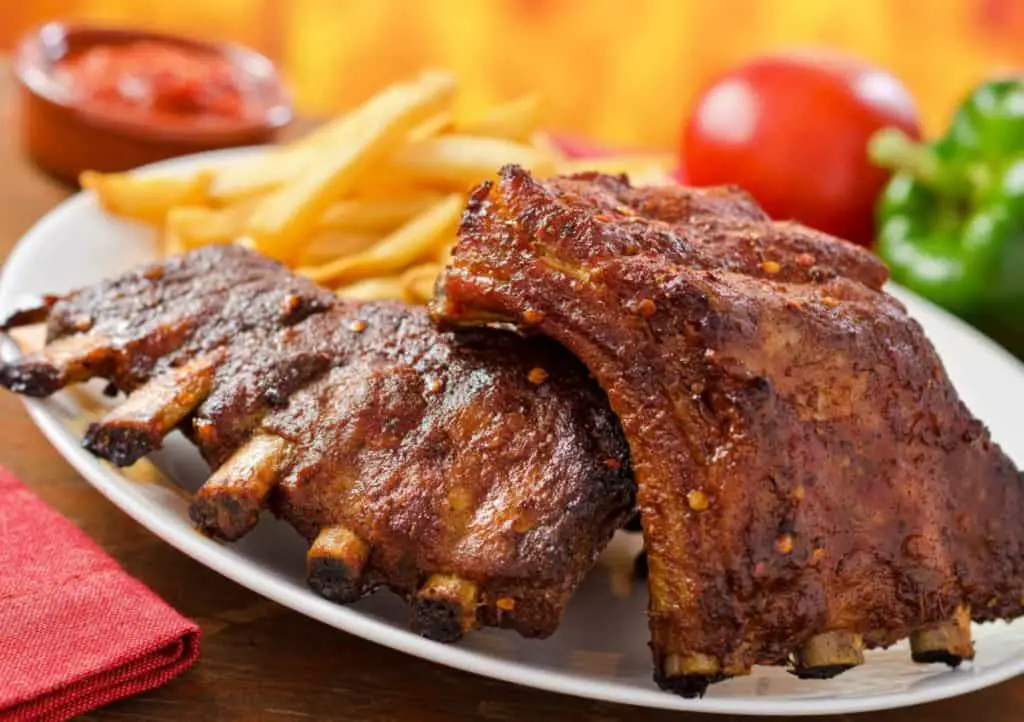
Baby back ribs go by many names. You might see them listed as:
- Baby back ribs
- Back ribs
- Loin ribs
- Canadian back ribs
This cut is extremely popular and they’ve become common staples at backyard barbeques, restaurants, and grilling competitions. Many pitmasters prefer to work with baby back ribs because they are easier to season and the meat at the ends is tender and juicy. Let’s dive into the pros and cons of this type of pork cut.
Pros:
Tender and Flavorful
Baby back ribs have a tender and lean texture that makes them great to eat! This meat soaks up spices, marinades, and rubs. This texture and flavor have influenced a lot of barbeque enthusiasts to choose baby back ribs over spare ribs.
Extra Meat On Top
It can be hard to navigate around the bones in a rib rack, so baby back ribs are also appealing due to the thick cut of accessible meat at the top. Each rack of ribs will have at least 1/2 inch of extra meat attached to the end. This meat is soft, juicy, and perfect for a grill or smoker!
Shorter Cooking Time
Baby back ribs are also smaller than their counterparts. They have a lower fat content, so it takes less time to cook them. If you don’t have time for an all-day cook, baby back ribs could be the right option for you.
Cons:
Prone to Drying Out
Because of their smaller size and lower fat content, baby back ribs tend to dry out more easily than other types of meat. They will need to be well-seasoned and soaked to help them retain as much moisture as possible. You may need to apply sauces and glazes periodically to keep them moist. This may be hard for new cooks to get the hang of, and nobody wants a dry piece of meat!
Smaller Size
As I mentioned above, baby back ribs are smaller than spare ribs. This can come in handy if you want a faster cooking time, but it also means that you’ll have less meat to eat at the end. A single rack of ribs can only feed 1-2 people, so it’s not a great option for larger groups.
More Expensive
These ribs are highly prized for their flavor and texture, and this value comes with a high price tag. A single rack of baby back ribs can cost $3-$4 per pound, which is almost twice as expensive as spare ribs. You’re getting a fairly small amount of meat for a high price. So although this is a great cut of meat, this price tag isn’t worth it for everyone.
Pros and Cons of Spare Ribs
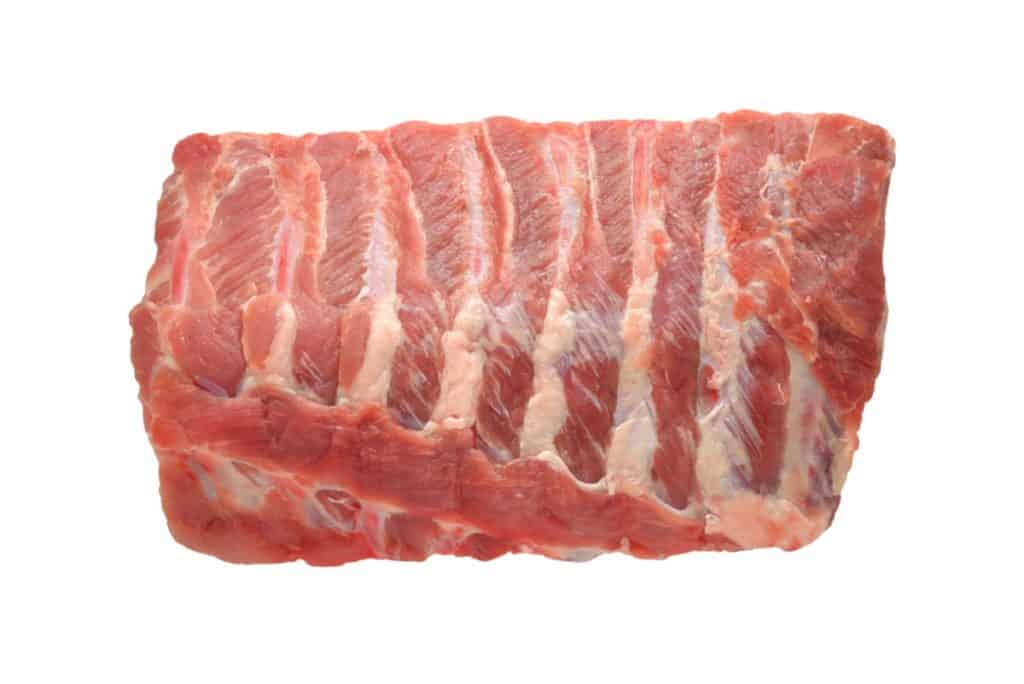
Spare ribs also go by many names. Some of these can be a bit misleading, so don’t be fooled if you see ribs that are labeled as:
- St. Louis Cut Ribs
- Kansas City Ribs
- BBQ Cut
- Baby Spare Ribs
This last name in particular can be confusing. Baby back ribs and spare ribs are different cuts entirely, so don’t be fooled if you see large flat racks that are labeled as “baby spare ribs”. A lot of pitmasters prefer the taste of baby back ribs, but spare ribs get the job done just fine!
At the need of the day, these cuts both come from the same general area of the pig, they just have a bit of a compositional difference. Spare ribs can bring your next barbeque event to the next level if you properly weigh the pros and cons of working with them.
Pros:
Fairly Cheap
One of the biggest benefits of working with spare ribs is the price! Depending on where you shop, you can sometimes find spare ribs for $1.50 per pound, which is much cheaper than baby back ribs. This affordability makes them great for larger groups because you’ll spend less for the same amount of meat.
Larger Size
Spare ribs are also quite a bit larger than baby back ribs. They usually weigh twice as much in comparison and the ribs are larger and meatier. There is more meat in between the bones, so this is a hearty item to serve at a group barbeque.
Meat is Marbled with Fat
As we’ve mentioned a few times above, one of the main appeals of spare ribs is the high fat content. The meat is swirled with fat, which keeps it moist and tender while it cooks. It also looks very nice, which definitely helps. Cooking shows give points for presentation for a reason!
Cons:
Longer Cook Times
Because they’re larger and heavier, racks of spare ribs require longer cook times. They are usually best when they’re cooked low and slow. You’ll need to commit to a long haul if you want to cook spare ribs to perfection.
Larger Ratio of Bones
Spare ribs also contain larger bones because they are taken from the lower ribcage of the pig. These bones are large and thick and the main meat is found between them. These bones can be hard to navigate and it isn’t fun to buy meat when you know you can only eat about half of it.
Harder to Infuse Flavor
Spare ribs naturally have a strong, meaty flavor. This isn’t a problem by itself, but it can be hard to introduce new flavors when you’re cooking this meat. You’re going to need lots of spices, rubs, and sauces if you want to thoroughly flavor spare ribs.
Pork Ribs vs. Beef Ribs
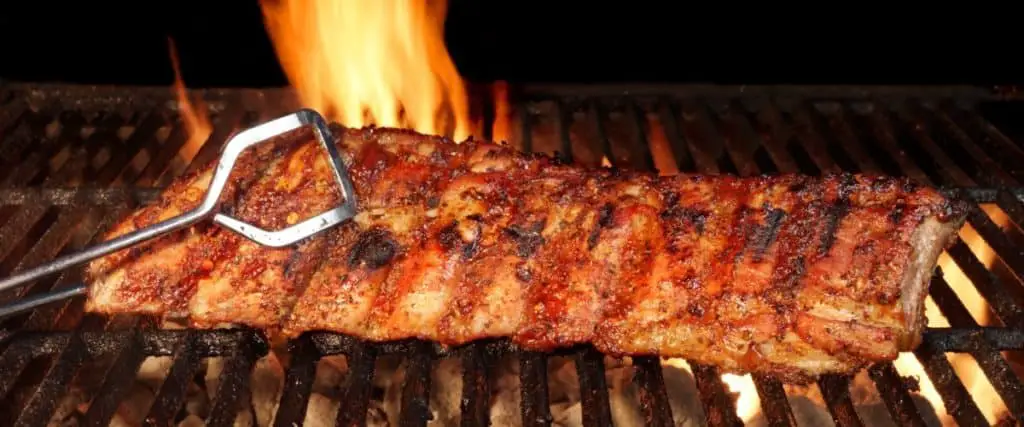
Ribs are important pillars of the BBQ world. You can technically grill ribs from a variety of animals including goat, lamb, deer, etc. However, the two most popular types are definitely pork and beef. Back ribs and spare ribs are available for both pork and beef, so you don’t have to sacrifice your favorite cut if you want to expand your BBQ. Both of these meats have the potential to be absolutely delicious when they’re cooked correctly, but they’re quite different from each other in many ways.
Size:
First of all, beef ribs come from cows, so their racks are much larger than those that come from pigs. In fact, some beef ribs are so large that they go by the title of “dinosaur ribs”! Full beef racks contain about 13 ribs, while pork will have between 13-17.
Pork racks weigh an average of 6 lbs. with a range of 2-9 lbs. Beef racks weigh about 11 lbs. with a range of 8-14 lbs. It can be hard to find a full rack of ribs that hasn’t been cut, but if you’re going to feed big groups, beef ribs are probably the way to go.
Flavor:
Beef and pork are also quite different when it comes to their flavor profile. Beef ribs have a strong, meaty flavor. This can be complemented by spices and flavors, but it’s hard to overpower them. Pork has a more mild, sweet taste that is easier to infuse with extra flavor combinations.
Texture:
Although it’s easy to think that pork is the fattier meat, beef ribs actually have a higher amount overall. This helps to keep them moist and juicy. Pork can feel a bit dry in comparison to beef, although beef tends to be a bit tougher and chewier. One of the key goals of cooking ribs is to keep them tender by retaining as much moisture as possible.
Cooking Methods:
Beef ribs and pork ribs might be structurally similar, but they require different temperatures and techniques when it comes to cooking them. They can both be cooked at a range of 225-250 degrees though.
Pork ribs usually require some kind of pre-cooking prep. This usually includes removing the membrane, trimming excess fat, and applying seasonings and brines. Pork usually cooks for 5-6 hours and many pitmasters like to use mesquite, hickory, maple, or cherry for their firewood.
Beef requires less preparation because the goal is to enhance the existing flavors, not introduce new ones. The fat doesn’t need to be trimmed either, so you can get them on the grill much faster than pork ribs. Beef ribs are larger and heavier, so they require longer cook times. 5-8 hours is the recommended cook length, and you can use woods like pecan, oak, hickory, and mesquite.
Nutritional Differences:
Beef and pork are both popular meats, but they have some nutritional differences. Refer to the chart below to help you decide which meat is best for your health and personal taste preferences. (All measurements refer to the nutritional breakdown of 1/4 lb. of meat)
| Pork | Total Amount | Beef | Total Amount |
| Calories | 230 | Calories | 345 |
| Total Fat | 16 g | Total Fat | 25 g |
| Cholesterol | 70 mg | Cholesterol | 113 mg |
| Sodium | 90 mg | Sodium | 80 mg |
| Protein | 17 g | Protein | 29 g |


